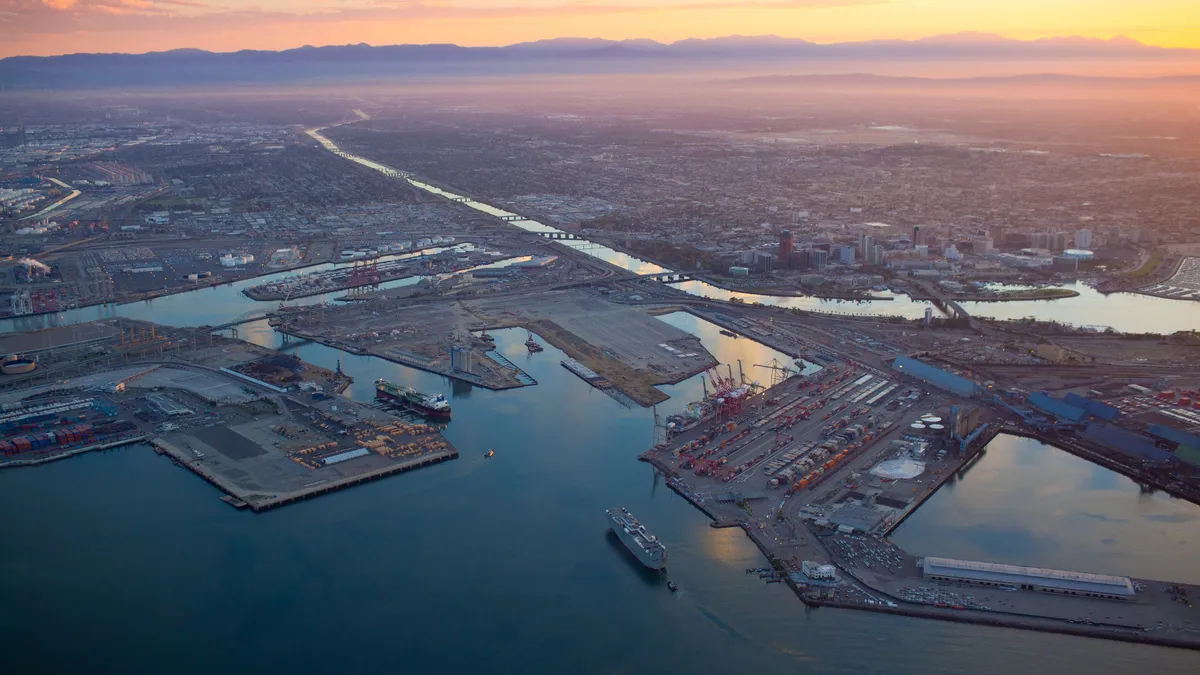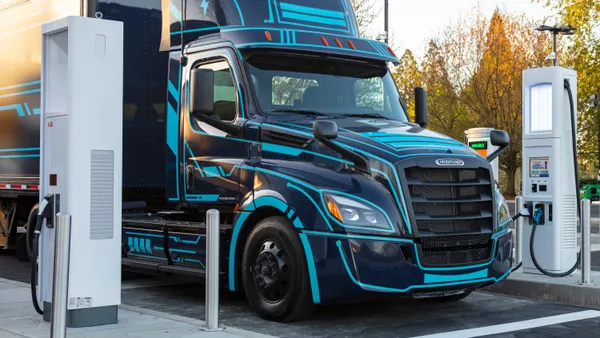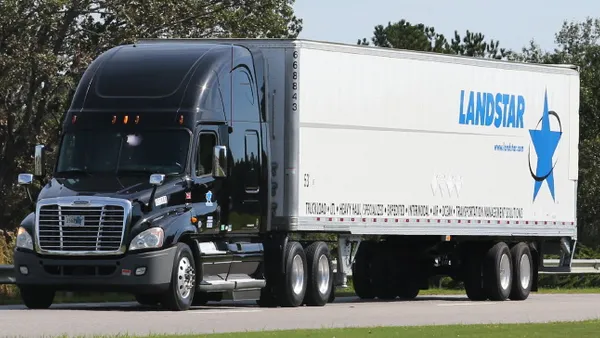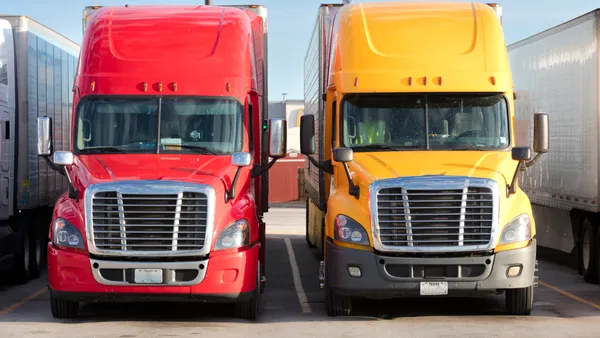Dive Brief:
- Shippers are being warned of severe congestion at the California ports of Los Angeles and Long Beach that could result in increased lead times on shipments, according to a customer advisory from C.H. Robinson dated Oct. 2.
- "We have been seeing record volumes in recent months being processed at our terminals," Phillip Sanfield, the director of media relations for the Port of Los Angeles, said in an emailed statement. "With this import surge has come ... operational challenges for the supply chain at ports around the country."
- The Port of Los Angeles expects the volume increase to continue in coming weeks, with large YoY increases in weekly import volume, according to the latest figures on its Signal dashboard.
Dive Insight:
The import surge in August was largely driven by consumer goods. Discretionary product and staple imports were up on stronger food and personal care shipments, Panjiva wrote in a research note.
"We are definitely seeing record volumes coming in, especially through LA and Long Beach," said Weston LaBar, the CEO of the Harbor Trucking Association. "So, as you can imagine, anytime you see a lot of volume, that comes in and stresses the supply chain."
Some of the issues are due to vessel delays, extra loaders, chassis shortages, limitations in appointment windows, increased dwell time for local cargo and a stretched drayage market, C.H. Robinson said in its advisory.
Sanfield said the port is encouraging supply chains to use dual transactions when working at the gateways "to improve efficiencies and ensure equipment availability."
The Harbor Trucking Association is also pushing for improved use of dual transactions, as it would help to alleviate the drayage and chassis shortages, LaBar said, noting there are hurdles to making this a reality.
"Depending on the terminal, it could be a byproduct of appointment system not working in an optimal fashion, which we're working with the terminals on," he said of the inability to conduct dual transactions in the current environment. "But in many cases, it's the lack of advanced receiving notification for empty containers by the ocean carriers."
Dual transactions were easier before the alliance structure of the ocean carriers, LaBar said.
"Prior to the alliances, if I was picking up, for instance, a Maersk box, I knew that I was going to APM terminals. And if I was returning a Maersk box, I knew I was returning APM terminals," he said. "Now it's a little bit more of an Easter egg hunt."

The Federal Maritime Commission made recommendations this summer that said truckers should be directed to bring empties back to the terminal where they originated to facilitate more dual moves.
Pick up and drop off locations now might be at different terminals. And ocean carriers might not let truckers know the empty receiving locations until late the day before a transaction, even though appointment systems require appointments to be secured two to three days out for empty returns.
"Even if you can line up [the empty return with an import appointment] if you don't know where you can return the container until the day before, it doesn't allow you to do real advanced planning," he said.
Ocean carriers should provide information on receiving location two to three days in advance, and they need to guarantee the appointments, he said.
Failing to conduct dual transactions means more drivers and more chassis are required to move the same amount of equipment.
Currently, there is a wide range between terminals, when it comes to dual transactions. Some are still managing to do the majority of moves as dual transactions. There are a couple differences between the terminals with high and low levels of dual transactions, LaBar said.
Terminals conducting many dual transactions promote efficiency through their appointment system and honor truck appointments, even if the ocean carrier makes changes to its schedule.
"If I go in and I make an import appointment, I shouldn't have to go in and make a separate appointment for an empty return," he said.
C.H. Robinson's advisory said bottlenecks are expected to continue into October. The uptick is leading to equipment issues around the world. All major carriers are dealing with equipment shortages at Asian ports. The 40’ High Cubes specifically are seeing a supply shortage at Chinese ports, according to DHL.
"With the robust export demand, particularly on the transpacific, expected to continue into the traditional slack season and beyond the Chinese Golden Week holiday, the equipment shortage looks unlikely to improve for some time," DHL said in a report released last Wednesday. "Carriers are working to resolve the issues in Asia by repositioning as much equipment as possible and even ship empties back as quick as possible."














